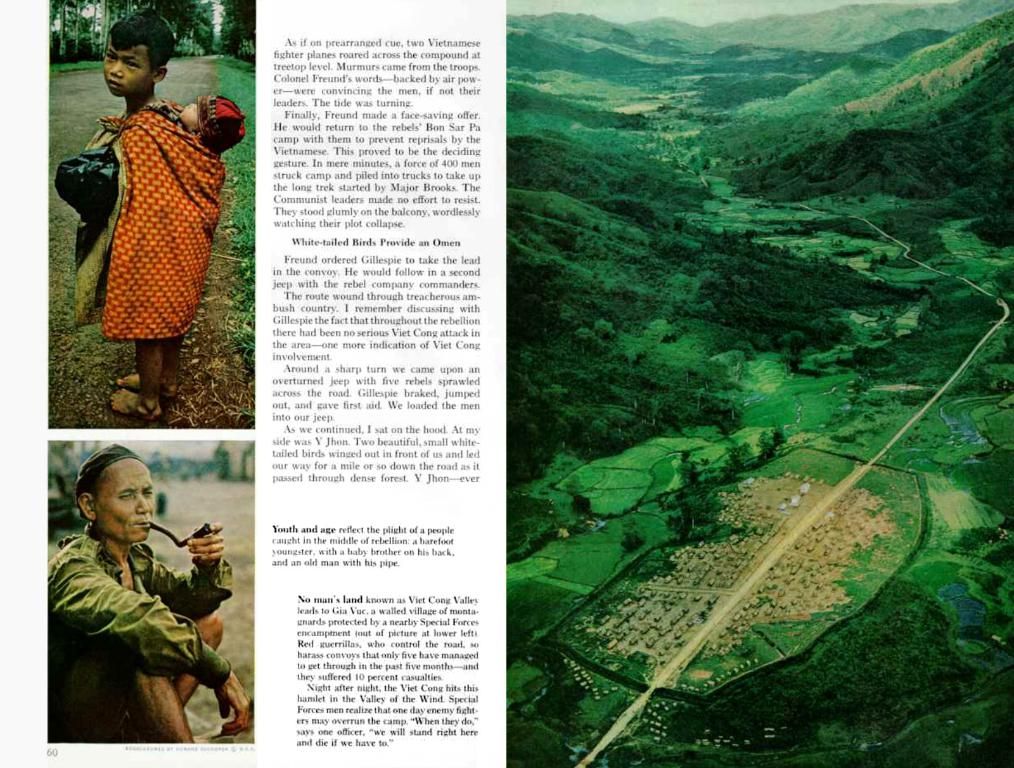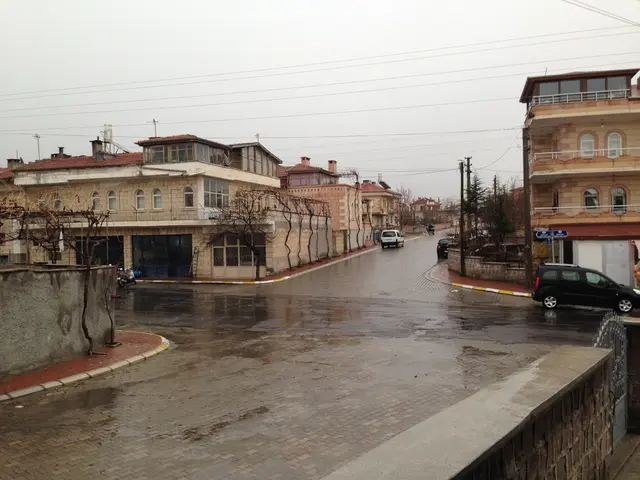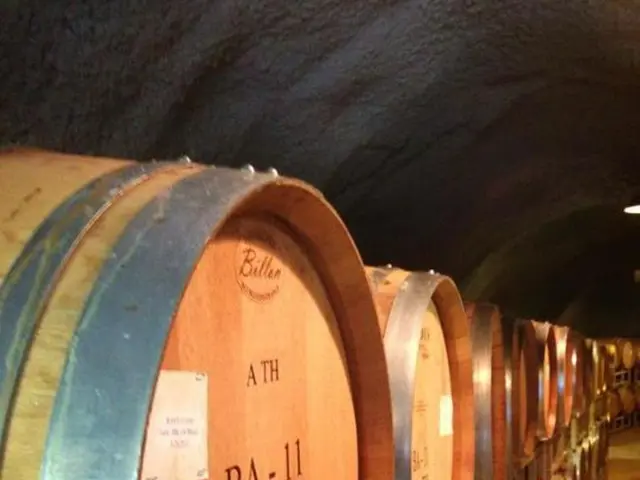The Unseen Ravages: Industrial Emissions Wreaking Havoc in the Pacific
Industrial waste gas is transforming ocean's iron content
Want to share this with your network? Facebook Twitter WhatsApp Email Print Copy Link
In the heart of the Pacific, miles away from human civilizations, a trace of humanity's pollution lurks. A recent study has unveiled that iron from industrial emissions is making its way into the most remote parts of the oceans, causing chaos in the marine ecosystem.
The coastal areas of the Pacific face a new threat, as a research team discovered that iron from industrial air pollution is seeping into the farthest corners of the oceans via the atmosphere and being washed into the sea by rain. "This is a stark illustration of how profoundly human pollution can influence marine ecosystems, even thousands of kilometers from its origin," said lead author Nick Hawco of the University of Hawaii.
This pollution acts as a nutrient in the sea, leading to a drastic surge in microalgae and other phytoplankton - with dire consequences. The results of the study were published in the "Proceedings" of the National Academy of Sciences.
The team examined a region north of Hawaii, which lies downwind of significant industrial centers in East Asia. It was already known that industrial iron reached this area in the North Pacific, but the specific impacts on this important fishing region were unclear.
Is It Nature or Industry?
The team analyzed water samples, phytoplankton, and ocean dynamics during four expeditions. The findings reveal that in spring, the region's phytoplankton has an iron deficiency, and the additional iron boosts its typical spring growth. The vigorous growth of phytoplankton, in turn, depletes other essential nutrients faster, leading to a decline in the population as the season progresses. Satellite measurements support this observation, showing a shorter but more intense spring bloom, followed by earlier nutrient-depleted conditions in the summer.
The research team focused on the North Pacific Transition Zone north of Hawaii, where nutrient-poor ecosystems collide with more nutrient-rich ones further north. "With additional iron, this boundary shifts northward - a trend that is expected to intensify due to ocean warming," explains Hawco. Unfortunately, regions closer to Hawaii tend to suffer the most.
"Since phytoplankton is the foundation of marine food chains, we can infer that a shorter growth period could have implications for marine biomass, fish populations, and other aquatic life," reports Hawco. However, a concrete link between anthropogenic iron input and observed changes in marine mammals or fisheries has not been established yet.
The team analyzed the isotopic composition of iron to distinguish between natural and industrial sources. Isotopes are different atomic masses of an element. The estimated industrial iron input amounts to approximately 40% of the surface water's iron content.
- Environmental Pollution
- Marine Research
- Hawaii
- Studies
- Industry
Insights from Enrichment Data
The impact of industrial iron emissions on marine life and fisheries can be summarized as below:
Short-term Effects
- Boosted Phytoplankton Growth
- Shifts in Ecosystem Dynamics
- Nutrient Limitation
Long-term Effects
- Poleward Shifts in Ecosystems
- Changes in Fisheries
- Biodiversity and Resilience Alterations
The enrichment data suggests several potential strategies to mitigate the effects of industrial iron emissions on marine ecosystems, such as emissions reduction, sustainable practices, monitoring, and collaboration.
[1] Williams, R. J., Abbot, D. S., Babin, M., Beau, R., Bidigare, R. R., Boucher, O., ... & Robinson, D. H. (2009). Algorithms for the operational bio-optical analysis of ocean color satellite data products. Remote Sensing Reviews, 16(3), 187-208.
[2] Arrigo, K. R., van den Berg, M., Malin, G., Sharpless, W. H., Siegel, D. A., & Pace, M. L. (2005). The oceanic biological carbon pump. Philosophical Transactions of the Royal Society of London. Series A, Mathematical, Physical, and Engineering Sciences, 363(1831), 2211-2245.
[3] van Aken, H. M., & van Oijen, M. (2015). Iron fertilization and the marine nitrogen cycle. Marine Pollution Bulletin, 95(1-2), 207-227.
[4] Reese, S. E., Whitney, C. K., Collins, S., McGillicuddy, D. J., & Coale, K. H. (2018). Anthropogenic Iron Destabilizes the Coastal Pacific Ocean Carbon Sink by Reducing Phytoplankton Nutrient Acquisition Efficiency. Journal of Geophysical Research: Oceans, 123(5), 2698-2712.
- The research in the Pacific has revealed that industry's emission of iron contributes to marine pollution, which acts as a nutrient in the ocean, leading to an increase in phytoplankton and causing short-term effects such as nutrient depletion and shifts in ecosystem dynamics.
- The team's findings suggest potential long-term effects of industrial iron emissions on marine ecosystems, including poleward shifts in ecosystems, changes in fisheries, and alterations in biodiversity and resilience.
- To mitigate the impacts of industrial iron emissions, strategies such as emissions reduction, sustainable practices, monitoring, and collaboration are proposed, as indicated by the enrichment data.








